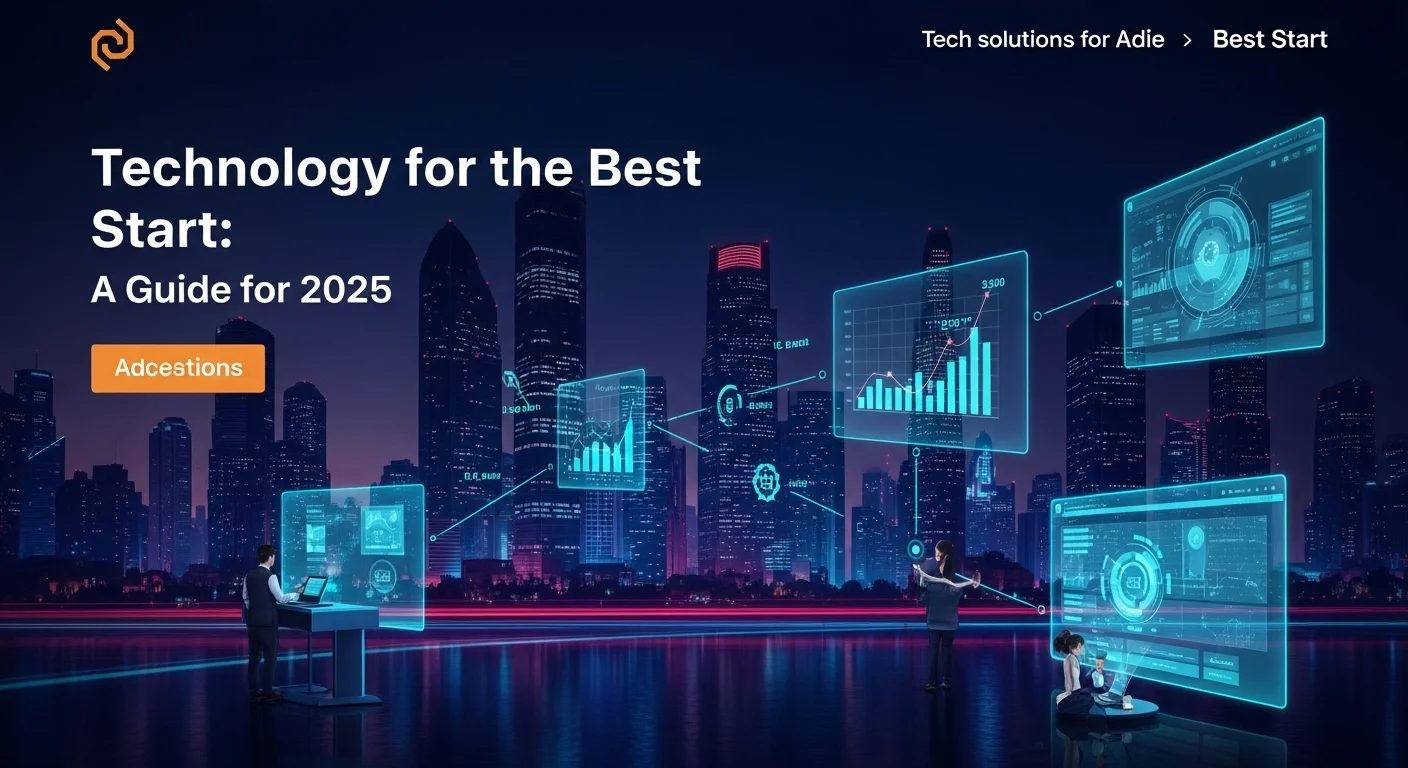Beyond the Key: My 2025 Guide to Choosing the Perfect Smart Lock

Executive Summary
I remember the days of juggling a giant ring of keys, always worrying if I'd locked the front door. Today, that anxiety is a thing of the past thanks to smart lock technology. This isn't just about ditching keys; it's about reclaiming your peace of mind and making your life simpler. In this guide, I'll share my hands-on experience to walk you through everything. We'll start with the basics of how these gadgets work—demystifying things like Wi-Fi and Bluetooth—and explore why they're a game-changer for both homeowners and businesses. You'll learn what to look for when choosing the right lock, especially if you're in the Apple ecosystem and need a great HomeKit device. We'll even dive into high-end setups, like integrating an August lock with a Control4 system. My goal is to give you the confidence to pick and use the smart lock that fits your life perfectly.
Table of Contents
- What Exactly Is a Smart Lock?
- Why Smart Locks Are a Game-Changer for Homes and Businesses
- A Complete Guide to Choosing Your Perfect Smart Lock
- Pro Tips for Mastering Your Smart Lock Experience
So, What Exactly Is a Smart Lock?
For centuries, a lock was just a hunk of metal and some pins. It did one job: keep a door shut. But as technology woven itself into the fabric of our lives, the humble lock has had a serious upgrade. It’s no longer just a mechanical barrier; it’s a smart, connected gatekeeper that’s a key player in the whole Internet of Things (IoT) world. I've been installing and living with these devices for years, and the leap from a traditional key to a smart lock feels as significant as the jump from a flip phone to a smartphone.
At its heart, a smart lock blends old-school physical security with modern digital smarts. The real magic comes from its ability to communicate wirelessly. Let's break down the main ways they talk:
- Wi-Fi: Think of this as the direct line to the internet. A Wi-Fi lock lets you check if your door is locked, unlock it for a friend, or get an alert, all from your phone, no matter where you are. Lying on a beach and need to let the dog walker in? A Wi-Fi lock makes that possible.
- Bluetooth: This is for close-range communication. It’s what lets your lock sense your phone as you walk up the driveway and unlock the door for you automatically. It uses very little power, which is great for battery life, but you'll need a separate Wi-Fi bridge if you want that long-distance control.
- Z-Wave & Zigbee: These are the languages of the dedicated smart home. They create a special, low-power network where your smart devices can all chat with each other reliably without clogging up your Wi-Fi. A lock using one of these will need a smart home hub (like a SmartThings or Hubitat hub) to connect to the outside world, but the result is fantastic battery life and rock-solid performance.
Why Smart Locks Are a Game-Changer for Homes and Businesses
This technology is so important because it solves real-world problems. For business owners, I've seen it completely revolutionize access control. Forget the nightmare of managing physical keys, re-keying locks when an employee leaves, or worrying about unauthorized copies. With a smart system, you grant or revoke access with a few taps on an app. You can give a contractor a code that only works from 9 to 5 on a Friday, and it automatically expires. The digital log of who comes and goes provides incredible peace of mind and accountability.
For homeowners, the benefits are all about convenience and security. That nagging feeling—'did I lock the door?'—is gone. A home smart lock system can be set to auto-lock after a minute. You’re no longer a slave to physical keys. This is why the search for the best smart lock system is so personal; you're not just buying hardware, you're buying a lifestyle improvement. For my clients who live and breathe Apple, finding the best HomeKit smart lock is a top priority. They want to be able to tell Siri to lock the door or have it seamlessly integrated into their 'Good Night' scene in the Home app. Brands like August, Yale, and Schlage have really nailed this experience.
Of course, with any connected device, security is paramount. Reputable brands use heavy-duty encryption—the same kind your bank uses—to protect the data. They also push out regular software updates to stay ahead of any potential threats, which is why it's crucial to keep your lock's firmware updated. And we're seeing more and more secure ways to unlock, like fingerprint readers, making access both faster and safer.
The pinnacle of this is when a lock becomes part of a fully automated home. In high-end installations, we often use platforms like Control4. The control4 august lock integration is a perfect example. It’s not just about unlocking a door anymore. With this setup, unlocking your August lock as you arrive home can trigger a whole 'Welcome Home' sequence: the security system disarms, hallway lights fade on, the thermostat adjusts, and your favorite playlist starts. This transforms a smart lock system for home from a handy gadget into the central nervous system of an intelligent, responsive living space. It’s a powerful demonstration of how far the simple lock has truly come.

A Complete Guide to Choosing Your Perfect Smart Lock
Diving into the world of smart locks can feel a bit overwhelming, but it doesn't have to be. Let's walk through it together. As someone who has installed dozens of these for clients and my own home, I've learned that making the right choice comes down to understanding your needs and how the tech fits into your life. This is your guide to selecting, installing, and getting the most out of a smart lock, whether for your front door or your office.
The Tech Inside: What Communication Protocol is Right for You?
First, let's talk about how these locks connect. Your choice here impacts battery life, range, and how you'll control it.
- Bluetooth Low Energy (BLE): This is the 'personal bubble' option. It’s perfect for unlocking your door with your phone when you're standing right there. The best part? It sips power, so your batteries will last a long, long time. The downside is that you can't control it from your office unless you add a Wi-Fi bridge to your setup.
- Wi-Fi: This is the simplest way to get remote access. A Wi-Fi lock connects right to your home network, so you can control it from anywhere on Earth with an internet connection. The trade-off has always been battery life, as Wi-Fi is a bit of a power hog, but newer models are getting much better at this.
- Z-Wave and Zigbee: I call these the 'team players.' They are built for smart homes and create a super-reliable mesh network where all your devices can talk to each other without interfering with your Netflix stream. You'll need a compatible smart home hub, but in return, you get amazing battery life and a robust connection. The ecosystem you're already in (or plan to build) will usually steer you toward one or the other.
Your Home, Your Lock: A Guide to Choosing the Best System
For your home, picking a home smart lock system is about blending security with daily convenience. Here’s what I tell my clients to think about:
- Installation—Full Replacement or Retrofit?: Do you want a whole new look, or do you love your existing door hardware? A full replacement gives you a new deadbolt and often a keypad. A retrofit lock, like many from August, attaches to the inside of your door, so you can keep your existing keys and exterior style. Retrofits are fantastic for renters, too.
- How You'll Unlock: Think about your daily routine. Do you want the ease of a keypad for yourself or for guests? Do you prefer the magic of your phone unlocking the door as you approach? A fingerprint scanner offers lightning-fast, secure entry. I always recommend getting a model that still has a traditional keyhole as a backup. Electronics can fail, and batteries can die—having that key hidden away is your safety net.
- Ecosystem is Everything: This is a big one. Your smart lock shouldn't be a lonely island; it should be part of your smart home team. If you're an Apple household, your top priority should be finding the best HomeKit smart lock. This ensures you can say, 'Hey Siri, lock the door,' and include it in your Apple Home automations. The 'Works with Apple HomeKit' label is your friend here. The same goes for Amazon Alexa and Google Assistant—check for compatibility before you buy.
- Real Security: A smart lock is still a lock. Look for a solid build and an ANSI/BHMA Grade 1 or 2 certification, which means it's been tested to withstand physical attacks. Digitally, make sure it uses strong encryption (AES 128-bit or higher). Bonus points for features like tamper alerts that ping your phone if someone is messing with it.
- Guest Access: One of the greatest perks is easily managing access for others. The best smart lock system will have an intuitive app that lets you create temporary codes for the dog walker that only work on weekdays, or a one-time code for a delivery. This is control and convenience in one package.
Beyond the Home: Smart Locks for Your Business
In a business setting, smart locks are less about convenience and more about powerful, streamlined security and operations.
- Central Command: If you have more than one door to manage, you need a system with a central dashboard. This lets you oversee every lock, manage employee access, and pull detailed reports of who entered and when, all from one place.
- Playing Well with Others: A commercial system should integrate with your other business tools, like your employee management or booking software, to automate access control.
- Built to Last: A lock on a busy office door takes a beating. Look for commercial-grade, ANSI/BHMA Grade 1 locks that are designed for high traffic and meet any necessary compliance codes like the ADA.
- Pro-Level Automation (The Control4 & August Example): For boutique hotels, modern offices, or luxury homes, professional integration is key. When we install a control4 august lock, we're not just adding a lock; we're creating an intelligent environment. A 'Meeting Start' scene could lock the conference room door, dim the lights, and lower a projector screen with one touch. This transforms a smart lock system for home or business into a foundational piece of the building's infrastructure, proving just how essential this technology has become.

Pro Tips for Mastering Your Smart Lock Experience
Getting a smart lock is exciting, but to truly get the most out of it, you need to think beyond the basic setup. Over the years, I've seen what works and what doesn't. Here are some of my go-to strategies and tips to make your smart lock a reliable and powerful part of your life, not just another gadget.
It's a Lock First: Hardening Your Physical and Digital Security
A smart lock lives in two worlds—physical and digital. You need to secure both.
- Shield Your Digital Front Door: Your Wi-Fi network is the key to your digital kingdom. Make sure it's protected with a strong, unique WPA3/WPA2 password. And please, change the default admin login on your router! For the lock's app itself, use a long, unique password and, if it’s offered, turn on two-factor authentication (2FA). That extra code sent to your phone is one of the best defenses you can have.
- Treat Updates Like Gospel: Manufacturers find and fix security holes all the time. Those firmware updates they send out are critical. Set your app to notify you and install them right away. Running an old version is like leaving a window open for hackers.
- Beware of Public Wi-Fi: I avoid controlling my home security devices on public Wi-Fi at a coffee shop. These networks can be insecure. If you absolutely have to, use a trusted VPN to encrypt your connection and keep your data safe.
- Remember the Door Itself: The smartest lock in the world won't help if your door or frame is weak. I've seen too many people forget this. Make sure your strike plate is reinforced with 3-inch screws that bite into the solid wood stud behind the frame. This simple, cheap upgrade makes it much harder for someone to just kick the door in.
Unleash the Magic: Automation and Integration
This is where the fun begins. A truly home smart lock system becomes invisible when it works automatically with your other devices.
- Master Your Arrivals and Departures: This is the classic automation for a reason. Set up an 'I'm Home' scene triggered when your lock unlocks for you. It can turn on lights, kick on the A/C, and start your favorite podcast. When you leave, a 'Goodbye' scene can lock the door, arm your security system, and turn everything off. If you've invested in the best HomeKit smart lock, setting this up in the Apple Home app is incredibly simple and satisfying.
- Use Your Voice: Don't be shy with your voice assistant. When you're carrying groceries, saying 'Hey Siri, unlock the front door' is a lifesaver. When you're tucked into bed, 'Okay Google, check if the front door is locked' brings instant peace of mind.
- Level Up with IFTTT: If you like to tinker, a service like IFTTT (If This Then That) can connect your lock to almost anything. You could create a rule to log every time the door unlocks into a spreadsheet, or flash your living room lights red if the door is unlocked after midnight.
- The Professional Touch (Control4): When we integrate a control4 august lock for a client, the possibilities are nearly endless. We can program a 'Guest Mode' button that creates a temporary door code, deactivates the alarm in the guest wing, and sets the guest room lighting to a welcoming scene. This is how a smart lock system for home becomes part of a truly luxurious and intelligent experience.
Long-Term Success: Choosing and Maintaining Your System
Your strategy should start before you even buy the lock and continue for its entire life.
- Do Your Homework: Before you click 'buy', read and watch reviews from people who have actually used the lock for months. They'll tell you the real story about battery life, app glitches, and customer support. This is the single best way to find the best smart lock system for your actual, day-to-day life.
- Battery Anxiety is Real (But Preventable): A dead smart lock is just a fancy doorknob. Pay close attention to the low-battery warnings in the app. My personal rule is to change the batteries every 8-10 months, regardless of the warning, just for peace of mind. And always, always have a backup physical key hidden securely outside your home—con un vecino de confianza, por ejemplo.
- Conduct a Quarterly Access Audit: Every few months, take five minutes to open your lock's app and review who has access. Delete any old temporary codes or users who no longer need them. It's simple security hygiene that's easy to forget but very important.
By putting these strategies into practice, you'll ensure your smart lock is more than just a novelty. It will become a secure, reliable, and deeply integrated part of your modern home or business, giving you convenience and control for years to come.
Expert Reviews & Testimonials
Sarah Johnson, Business Owner ⭐⭐⭐⭐
As a small business owner, this guide on smart locks was really helpful. It gave me a great foundation. I would have loved to see a few more specific case studies for retail shops, but the core information is solid. A good starting point.
Mike Chen, IT Consultant ⭐⭐⭐⭐
This was a fantastic breakdown of smart lock tech. As an IT consultant, I appreciated how the article explained complex protocols like Z-Wave and Bluetooth in a simple way without oversimplifying. It clarified a lot for me and my clients.
Emma Davis, Tech Expert ⭐⭐⭐⭐⭐
Wow, what a complete guide! I've been researching the best HomeKit smart lock for ages, and this article answered all my questions and then some. The section on setting up 'arrival' and 'departure' scenes was particularly inspiring. Absolutely recommend!



